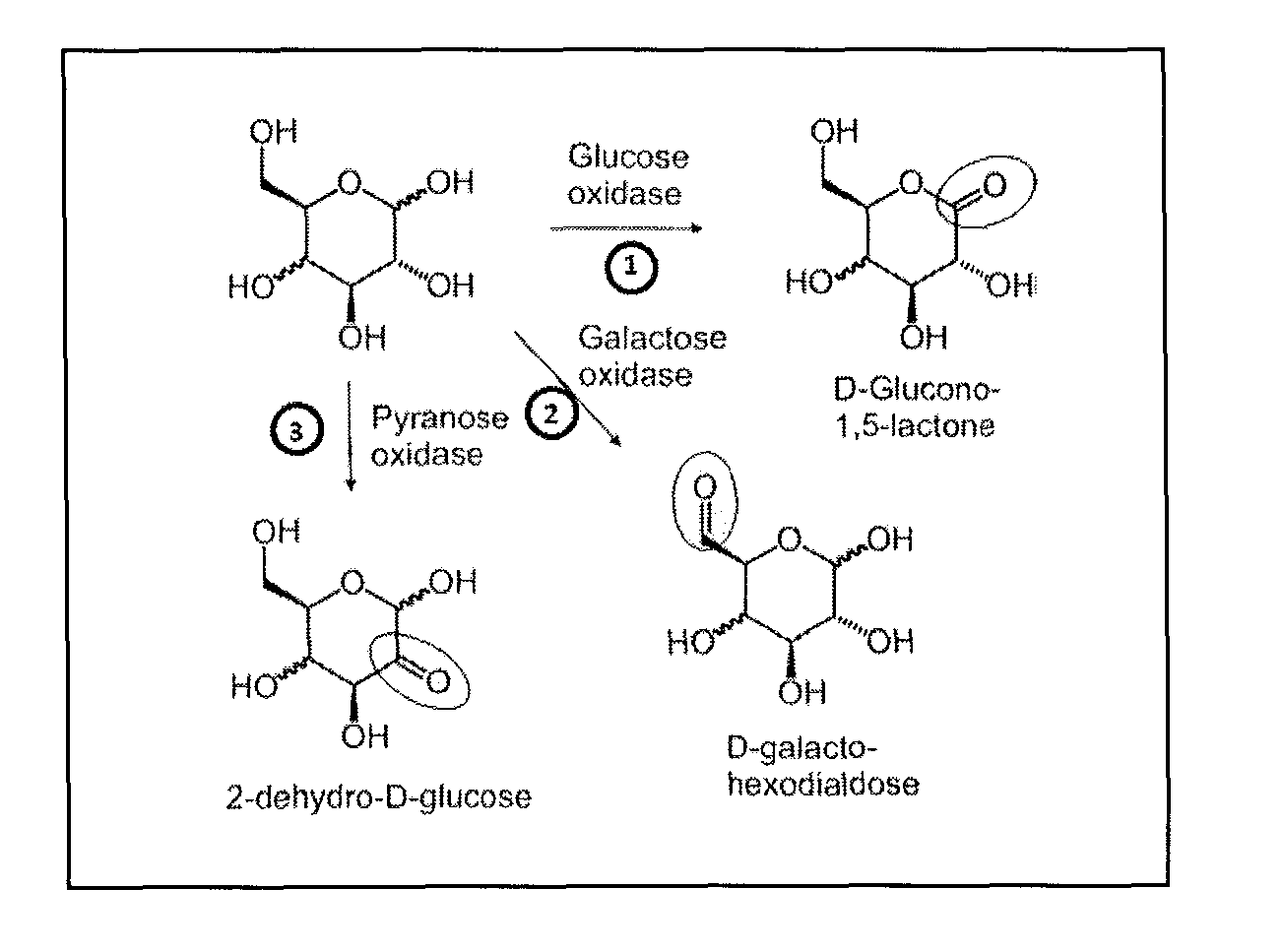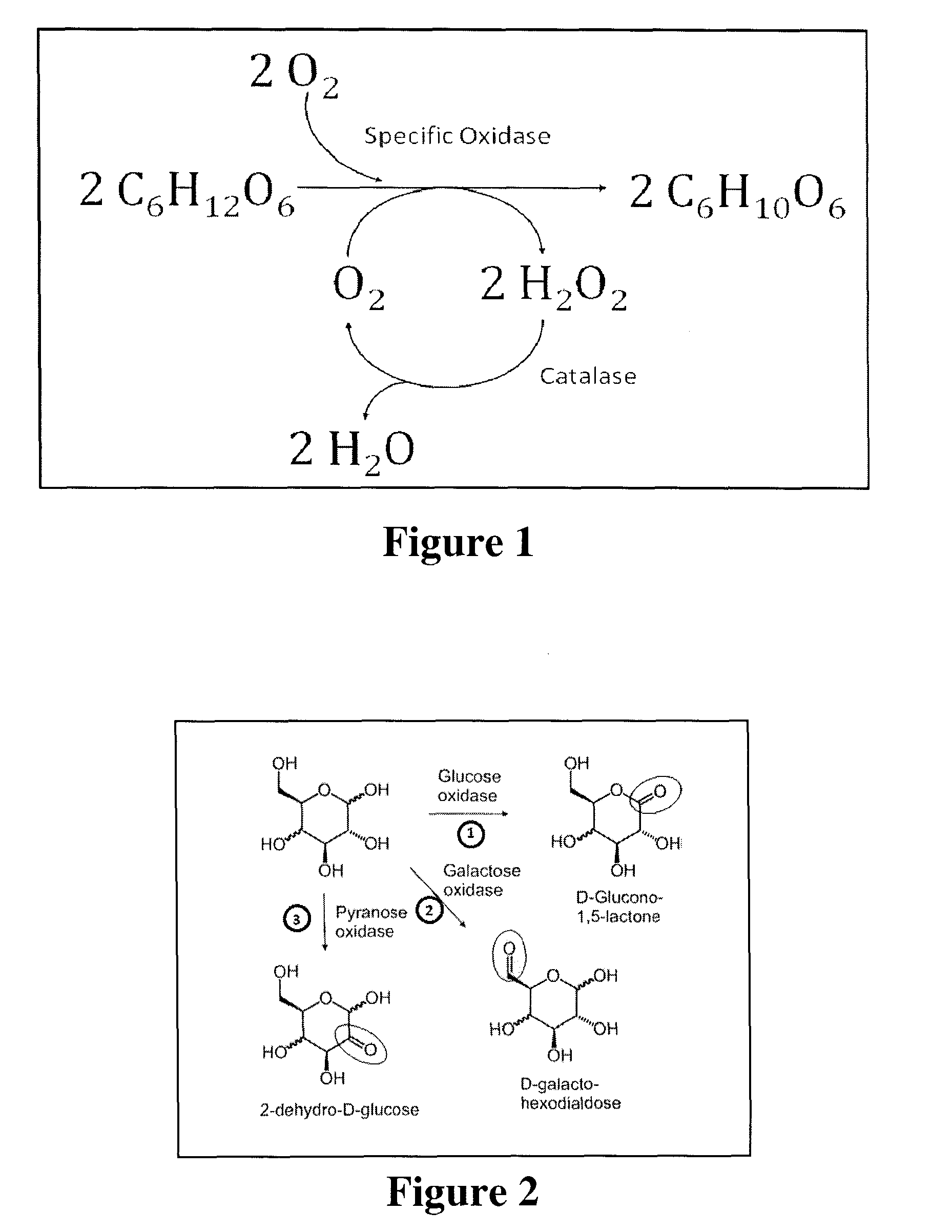Systems and methods for enzymatic oxygen removal
a technology of oxygen removal and oxygen enzymation, applied in the field of oxygen (o2) removal systems, can solve the problems of inability to maintain anaerobic conditions with sulfite for the time required for electrochemical measurements, limited field application of biosensors based on reductases, and incompatible oxygen removal methods based on argon purging or vacuum degassing
- Summary
- Abstract
- Description
- Claims
- Application Information
AI Technical Summary
Benefits of technology
Problems solved by technology
Method used
Image
Examples
examples
[0044]A. Oxygen Removal Systems for the Reductase Biosensor
[0045]The aldohexose-oxidase-catalase system was tested with respect to its ability to remove oxygen and maintain an anaerobic condition in an open electrochemical cell under ambient air. Two types of electrochemical cells were used: A standard cell with 2.0 mL of electrolyte solution and about 0.8 cm2 of ambient air / electrolyte interface. Ag / AgCl reference electrode, platinum counter electrodes and pyrolytic graphite working electrodes (PGE) were used. For low volume measurements, single-use screen printed electrodes (SPE) with 300 μL wells were used. The working and counter electrode material is carbon and the pseudo-reference electrode material is silver. The electrolyte volume was either 100 or 200 μL. The surface area of the interface with air was ˜0.2 cm2. The SPE based electrochemical cell is used as the model for field applications. The presence of oxygen was monitored with cyclic voltammetry. When oxygen is present ...
PUM
| Property | Measurement | Unit |
|---|---|---|
| volume | aaaaa | aaaaa |
| volumes | aaaaa | aaaaa |
| catalytic current | aaaaa | aaaaa |
Abstract
Description
Claims
Application Information
 Login to View More
Login to View More - R&D
- Intellectual Property
- Life Sciences
- Materials
- Tech Scout
- Unparalleled Data Quality
- Higher Quality Content
- 60% Fewer Hallucinations
Browse by: Latest US Patents, China's latest patents, Technical Efficacy Thesaurus, Application Domain, Technology Topic, Popular Technical Reports.
© 2025 PatSnap. All rights reserved.Legal|Privacy policy|Modern Slavery Act Transparency Statement|Sitemap|About US| Contact US: help@patsnap.com



